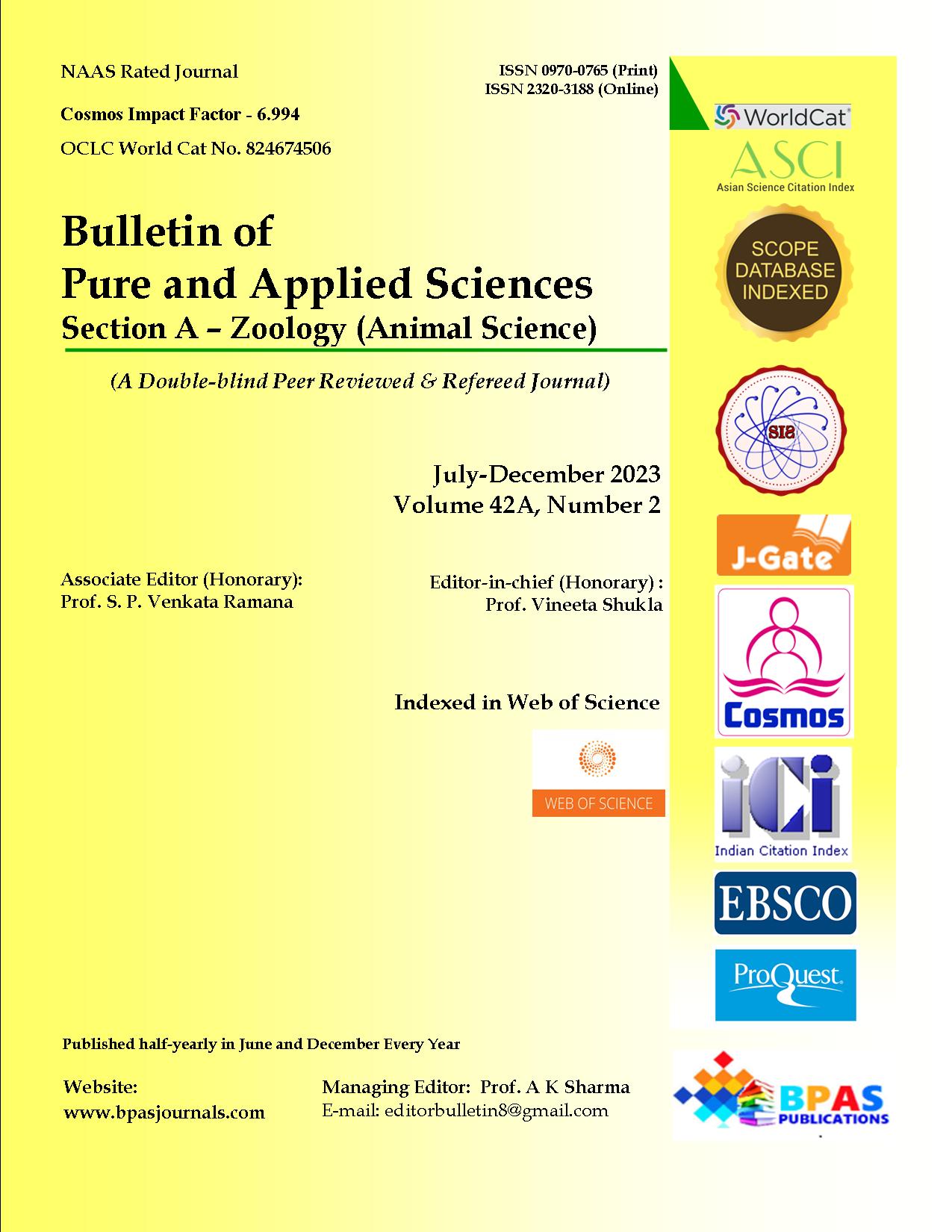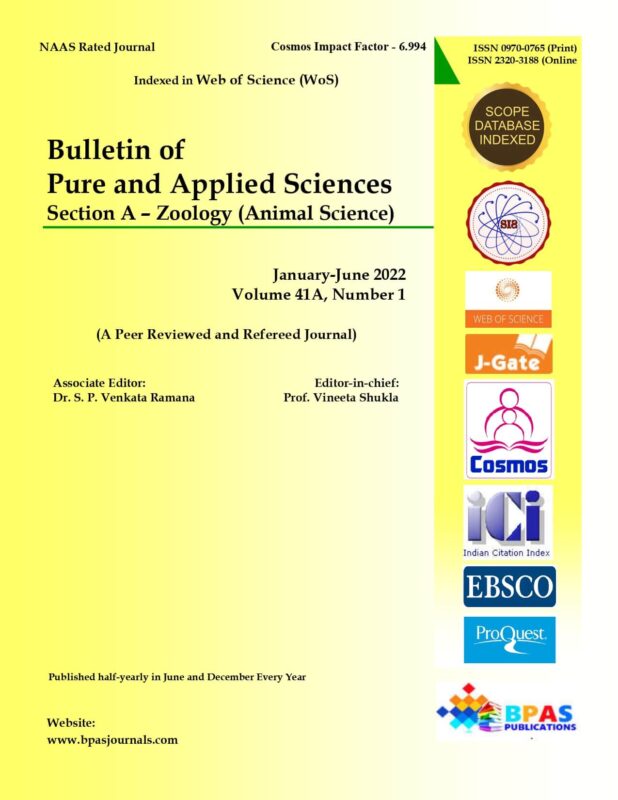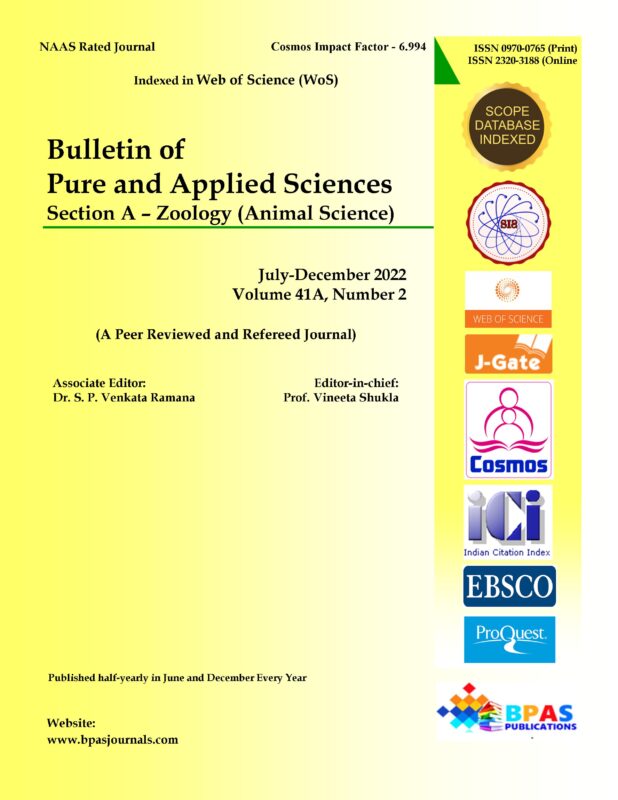Chromosomal Studies on Some Aphid Species from the Shimla Hills of Himachal Pradesh, India
9.38$
1Meena Kumari, 2Parul Sanaik*, and 3Sarita Kumari
Bulletin of Pure and Applied Sciences
Zoology (Animal Science), Vol.42A, No.2,
July-December 2023: P.224-229
Description
1Meena Kumari, 2Parul Sanaik*, and 3Sarita Kumari
Author’s Affiliation:
1Associate Professor in the Department of Biosciences, Himachal Pradesh University Summerhill, Shimla, Himachal Pradesh 171005, India.
E-mail: meenakchaudhary@gmail.com
2Research scholar, Department of Biosciences, Himachal Pradesh University Summerhill, Shimla, Himachal Pradesh 171005, India.
E-mail: parulsanaik111@gmail.com
3Research scholar, Department of Biosciences, Himachal Pradesh University Summerhill, Shimla, Himachal Pradesh 171005, India.
E-mail: koundalsarita123@gmail.com
*Corresponding author:
Parul Sanaik
Research scholar in the lab of Cytogenetics and Molecular Genetics, Zoology, Department of Biosciences, Himachal Pradesh University Summerhill, Shimla, Himachal Pradesh 171005, India.
E-mail: parulsanaik111@gmail.com



